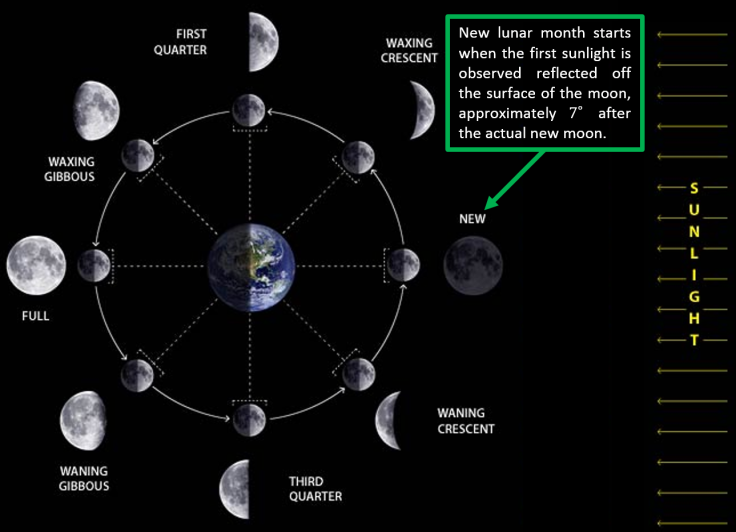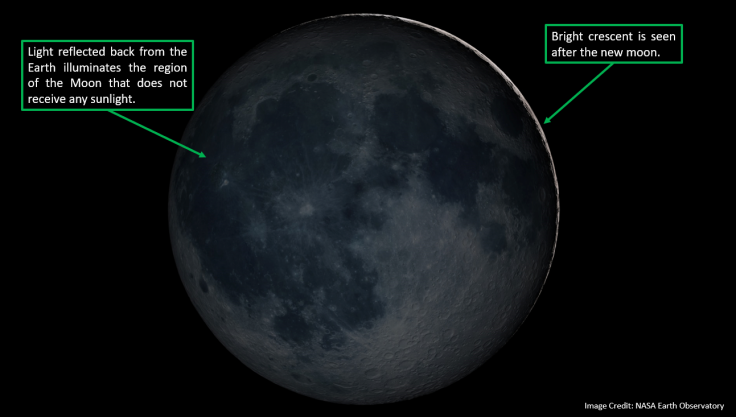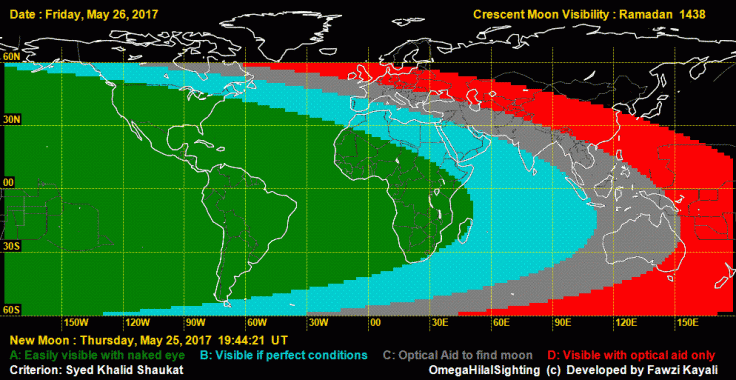What is a new moon?
A new moon is when the surface of the moon facing Earth is pointing directly away from the Sun (see the image below). At this configuration no sunlight is reflecting off the surface of the Moon facing towards Earth. Incidentally if the moon happens to be aligned perfectly with the Sun a new moon will also coincide with a solar eclipse. However, many additional things mean that solar eclipses occur a very small fraction of all the new moons we see.

The start of a new lunar month begins when the first light from the crescent moon is observed. As there is no sunlight reflecting towards Earth at the point of the new moon we have to wait until the moon has moved further 7 degrees on its orbit to make a sighting. Typically this occurs after it completes a further of its orbit and is why sightings are not made until 11 – 15 hours after the true new moon.
Interestingly though there is enough sunlight reflecting off the surface of the Earth to illuminate the Moon, known as Earthshine. Depending on seeing conditions the shadowed area of the moon can still be seen naked eye due to this effect.

Why Can’t The New Moon Be Viewed By Everyone At The Same Time?
The new moon occurs approximately at the same time regardless of where on the planet you are located. However, the main issue arises due to its visibility. We are trying to view an astronomical event from various locations on the surface of a sphere (Earth). Naturally there are many locations where the event cannot be observed from Earth.

An online resource which creates visibility maps (shown below) of the new moon can be found here. Next we are going to discuss the visibility and why it is constantly changing with respect to fixed locations on Earth.
